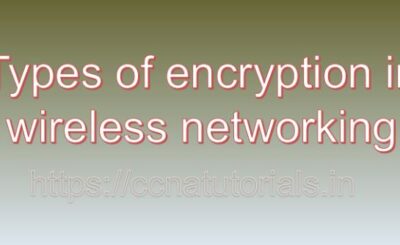Contents of this article
In this article I describe Ethernet shared media and point-to-point in networking for ccna. I can give you an overview of Ethernet shared media and point-to-point used in networking for ccna, along with examples. Ethernet shared media and point-to-point are two fundamental concepts in networking that describe different methods of connecting devices in a network. Let’s explore each concept in detail:
Ethernet Shared Media:
Ethernet shared media refers to a networking configuration where multiple devices share the same physical communication medium, such as a coaxial cable or a twisted pair cable segment. In shared media Ethernet networks, all devices connected to the same network segment compete for access to the communication medium to transmit data.
Characteristics of Ethernet Shared Media:
Collision Domain:
In shared media Ethernet networks, all devices connected to the same network segment share a common collision domain. When two or more devices attempt to transmit data simultaneously, a collision occurs, and the data frames are corrupted. Devices must detect collisions and retransmit data after a random backoff period to avoid further collisions.
CSMA/CD Protocol:
Shared media Ethernet networks use the Carrier Sense Multiple Access with Collision Detection (CSMA/CD) protocol to regulate access to the communication medium. Before transmitting data, devices listen for carrier signals on the network to detect ongoing transmissions. If the medium is idle, the device begins transmitting data. However, if a collision is detected during transmission, devices involved in the collision enter a collision detection mode and follow the CSMA/CD algorithm to handle collisions.
Broadcast Communication:
Shared media Ethernet networks support broadcast communication, allowing devices to send data packets to all other devices on the same network segment. Broadcast traffic is forwarded to all devices within the broadcast domain, increasing network traffic and potentially causing network congestion.
Example of Ethernet Shared Media:
An example of Ethernet shared media is a legacy Ethernet network deployed using coaxial cables or unswitched Ethernet hubs. In such networks, multiple devices, such as computers or printers, are connected to the same network segment, and all devices share the same communication medium. When a device wants to transmit data, it listens for carrier signals and checks for collisions before sending data. If a collision occurs, the devices involved follow the CSMA/CD protocol to handle the collision and retransmit data as needed.
Point-to-Point:
Point-to-point refers to a networking configuration where two devices are connected directly to each other without any intermediate networking devices or shared communication medium. In a point-to-point connection, data can be transmitted between the two devices without contention from other devices.
Characteristics of Point-to-Point Connections:
Dedicated Communication Link:
Point-to-point connections use dedicated communication links, such as serial cables or leased lines, to connect two devices directly. Each device has exclusive access to the communication link, allowing data to be transmitted without contention from other devices.
Full Bandwidth:
Point-to-point connections provide the full bandwidth of the communication link to the connected devices. There are no collisions or contention for access to the communication medium, ensuring efficient data transmission between the two devices.
Simple Configuration:
Point-to-point connections are easy to configure and manage since they involve only two devices connected directly to each other. There is no need for complex network addressing or collision detection mechanisms.
Example of Point-to-Point Connection:
An example of a point-to-point connection is a serial connection between two routers or switches using serial cables. In such a configuration, two networking devices are connected directly to each other using serial interfaces, and data can be transmitted between the devices over the dedicated communication link without interference from other devices. Point-to-point connections are commonly used for interconnecting networking devices in WAN (Wide Area Network) environments, such as connecting branch offices to a central headquarters or linking data centers together.
Conclusion for Ethernet shared media and point-to-point
In summary, Ethernet shared media and point-to-point are two different methods of connecting devices in a network. Ethernet shared media involves multiple devices sharing the same physical communication medium and competing for access to transmit data, while point-to-point connections provide dedicated communication links between two devices without contention from other devices.
Understanding the characteristics and applications of each method is essential for designing and deploying efficient and reliable network infrastructures. I hope you found this article helpful related to Ethernet shared media and point-to-point for ccna. You may drop a comment below or contact us for any query or suggestions related to the contents of this website.






